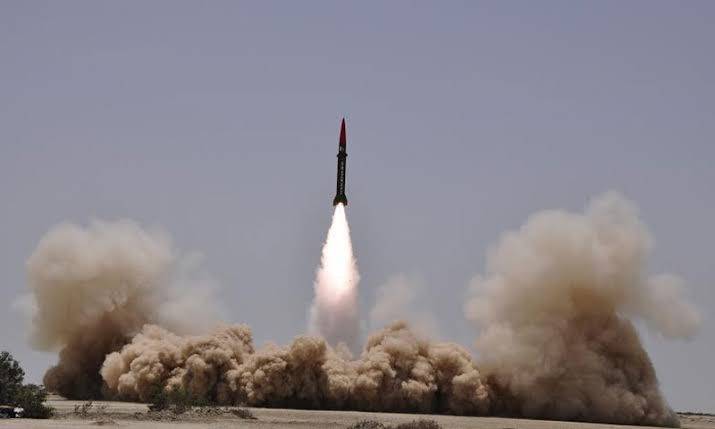The former Indian Prime Minister Vajpayee, during his election campaign in February 1998, chauvinistically declared that his government would, “take back that part of Kashmir that is under Pakistan’s occupation”. Maybe it was just an offensive electoral activity, in which Vajpayee concentrated on manipulating the subject of national security for political gains. But when India declared itself an overt nuclear-armed state, in May 1998, it was evident that India had the offensive aims to openly threaten, deploy and use nuclear weapons against the neighboring countries to achieve its hegemonic interests.
Nowadays, South Asia is categorized by international analysts as one of the unstable regions of the world, where the chances of nuclear brinkmanship are high because of the longstanding rivalry between Pakistan and India. India's vision for regional supremacy, which seeks dominance through coercion and military power, is the main cause of insecurity and volatility in the region. For the last 23 years, Indian politicians, instead of politically engaging its regional rivals, have pursued dangerous delusions of suicidal nuclear warmongering. India's reckless conduct as a so-called prestigious nuclear weapon state is more dangerous than the actual threat of nuclear war.
Since 1974, while disregarding the international nuclear nonproliferation regimes, India has pushed the region into a protracted nuclear arms race. India is operating the world’s most dangerous fastest-growing nuclear weapons and missile programs in the world, which are not only threatening for the region but world peace because of flawed nuclear safety and security standards. Increasing stocks of Indian fissile material and the development of nuclear triad capability – bombers, missiles and nuclear power/capable submarines – have increased the capability of New Delhi in the strategic realm. Contrary to International media claims, the Indian triad consists almost 500 nuclear weapons including thermonuclear weapons and has the capacity to produce over 2,600 nuclear weapons for tactical and strategic use.
In an aggressive pursuit to complete its triad, India is rapidly expanding its nuclear programme for military purposes, under several covert projects. For instance, the Dhruva plutonium reactor, which already in operation, is not covered by IAEA safeguards. India is also working to build more than five breeder reactors to expand its production capability of plutonium-grade nuclear weapons to almost 700kg annually. Indian scientists are advocating to avoid placing the fast breeder programme under the IAEA safeguards because of the military utility of this reactor type. India is also building a covert nuclear cityto produce thermonuclear weapons – the largest military complex of nuclear centrifuges and atomic research laboratories in South Asia. This complex infrastructure will allow New Delhi to assemble large-yield nuclear arms & hydrogen bombs. Ironically, when the Stockholm International Peace Research Institute (SIPRI) is claiming that India has 150 nuclear warheads, according to an Indian nuclear physicist, Dr R. Rajaraman, Indian Defense Ministry sources had covert plans in 2005 to increase nuclear inventory up to 300-400 warheads, in next decade.
Today, the undisclosed plutonium stocks have not been under IAEA’s inspection and left with Indian arms production facilities under the discriminatory nuclear cooperation deal between the United States and India. The civilian Plutonium reserves that are outside the safeguards of the IAEA and designated for strategic purposes are the main cause of concern. In a three-stage plan, India is continuing to expand its unsafeguarded nuclear power program. The installation of several nuclear reactors has also been announced by New Delhi. This capability will generate excessive fissile material, other than the fuel necessary for breeder and naval reactors. Over the next few years, India will be capable to replace China, France and the United Kingdom in terms of its abilities to produce nuclear weapons to become the third behind the US and Russia.
Under the influence of the rising economy of India, like-minded Western analysts are trying to divert the consideration of the international community from the fastest growing Indian nuclear weapons program and threats associated with it to the peaceful neighboring countries. Since 1974, the Indian intentions are clear that it will use any kind of advanced technology, which provided under the rubric of peaceful purposes, for military use and will violate any international law related to nuclear, space and missiles program to exercise hegemony in the region. The Indian policy aims, concerning nuclear weapons, are solely constructed to push its hegemony in the region. Now it is time for the international community to realize the Indian nuclear threat.






